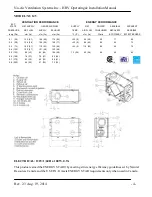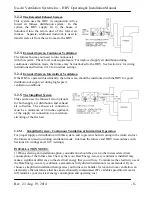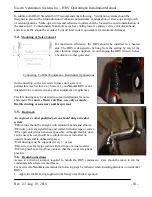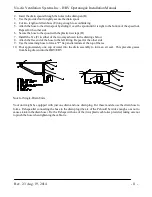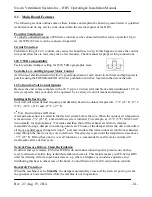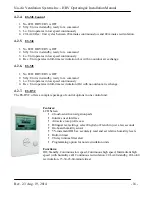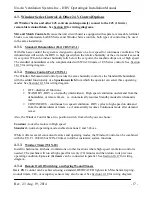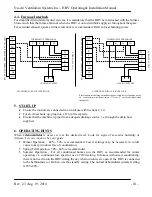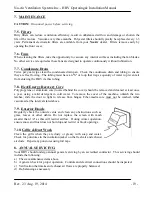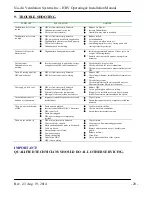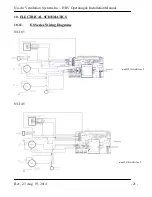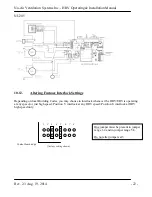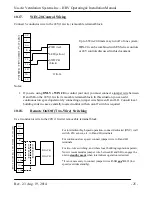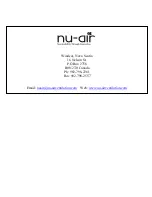
Nu-Air Ventilation Systems Inc. - HRV Operating & Installation Manual
Rev. 2.3 Aug. 19, 2014
- 18 -
4.4.
Furnace
Interlock
For simplified (return/return) duct systems, it is mandatory that the HRV be interlocked with the furnace
blower such that the furnace fan runs when the HRV is on to distribute supply air throughout the space.
For extended exhaust systems, furnace interlock is recommended. Refer to local building codes.
5.
START-UP
Ensure the controls are connected in accordance with Sections 4, 10.
For electrical hook-up, plug into a 120 volt receptacle.
Ensure that the machine is piped to an adequate drainage source, i.e. through the drain hose
supplied.
6.
OPERATING HINTS
When a
dehumidistat
is used, set it at the desired level. Look for signs of excessive humidity or
dryness.
Let your windows be your guide
.
Winter Operation – 40% - 50% is recommended. Lower settings may be necessary in colder
zones to keep windows free of condensation.
Spring/Fall Operation- 50% - 60% is recommended
Summer Operation – For air conditioned homes run the HRV as recommended for winter
operation, i.e. continuous low speed or use a 20/40 setting. In homes without air conditioning,
there is no need to run the HRV during the day when windows are open. If the HRV is connected
to the bathrooms(s) or kitchen, use the standby setting. The normal dehumidistat summer setting
is 65%-80%.
STANDARD FURNACE INTERLOCK
ALTERNATE FURNACE
INTERLOCK
If the standard interlocking method has the unwanted effect of bringing on the
AC, i.e. thermostats that do not isolate “G” from “Y”, use the alternate method
shown above.
U
N
IT
2
4
V
A
C
R
EM
O
V
A
B
LE
TE
R
M
IN
A
L
B
LO
C
K
COOLING SYSTEM
F
U
R
N
A
C
E
2
4
V
A
C
NC
I
NO
R
C
TL
TS
SB
Hi
LO
THERMOSTAT TERMINALS
Y
R
G
W
W
G
R
C
Y
U
N
IT
2
4
V
A
C
R
EM
O
V
A
B
LE
TE
R
M
IN
A
L
B
LO
C
K
COOLING SYSTEM
F
U
R
N
A
C
E
2
4
VAC
NC
I
NO
R
C
TL
TS
SB
Hi
LO
THERMOSTAT TERMINALS
Y
R
G
W
W
G
R
C
Y

